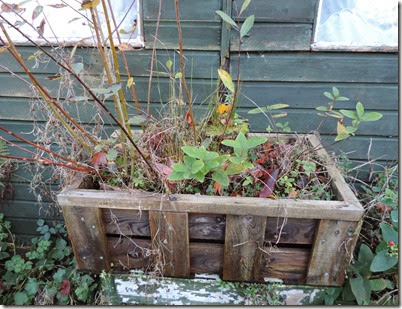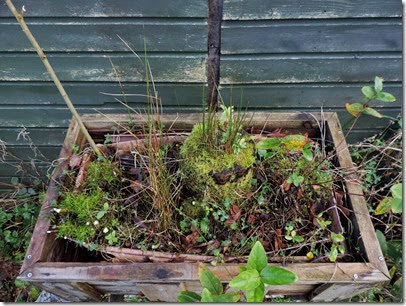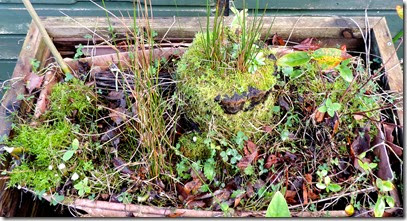4th November was the tenth anniversary of this window box wildlife project. Generally speaking the box seems to have settled into a fairly stable state with many of the plants happily co-habiting. And still there is no sign of falling fertility.
The picture above shows the top of the sallow log with its remarkable plant assemblage: various mosses, rushes (
Juncus sp.), willowherb (
Epilobium sp.), hairy tare, white clover, birch, hazel and yew. I thought the latter had died, but it perked up in summer and produced some brownish new leaves (between the two clumps of rush). Just off to the right is a leaf of ragwort. There are several small plants of this, all relatively recent arrivals.
The picture above is of a berry of tutsan (Hypericum androsaemum), a plant that has been growing in the box for many years. Most books say the berries are poisonous, but others that they are simply inedible: I suspect the latter is true as no evidence seems to be offered as to the nature of any toxicity.
The specific name of the plant androsaemum is from Classical Greek and means 'man's blood', andros aimon. This is said to be because the berries, if squashed, produce a red, blood-like juice. They don't. The named was coined by Dioscorides who was born in what is now Turkey, worked for the Roman army and wrote in Greek. Perhaps he meant some other plant.
Another verbal curiosity is that as well as tutsan, the plant is known as 'park-leaves'. Some books say, with impeccable logic, that this is because it grows in parks, but it is not especially prominent in this habitat. I think a better conjecture, given in The Dictionary of Plant Lore, is that 'park' is a corruption of Hypericum. But why 'leaves' instead of 'leaf'? There is possibly a clue in the Welsh term for the plant dail y beiblau meaning 'bible leaves' (because people used to use the pleasantly balsam scented leaves as page markers in their bibles). Maybe park-leaves were used in the same way in England.
If anyone has noticed them, the yellow-orange spots on the park-leaves leaves are caused by the rust fungus Melampsora hypericorum, which seems to occur wherever the plant grows.










